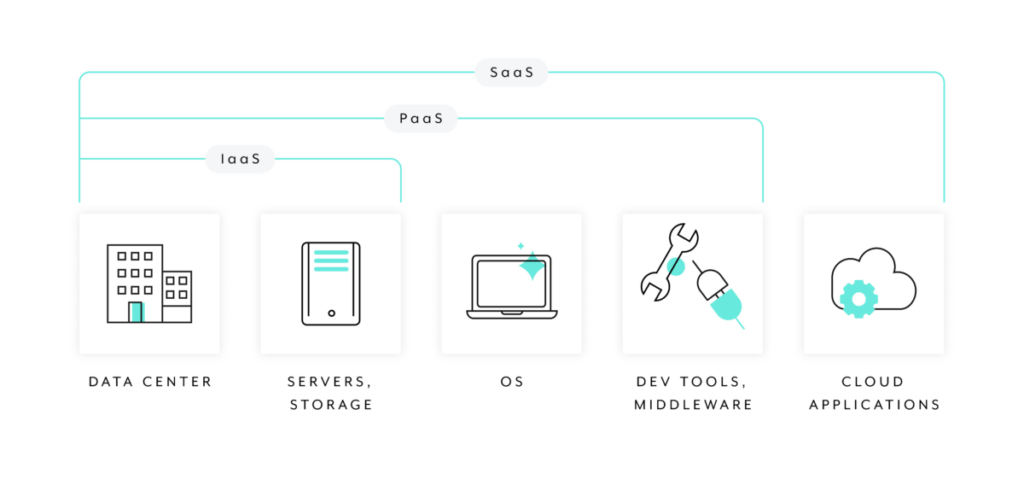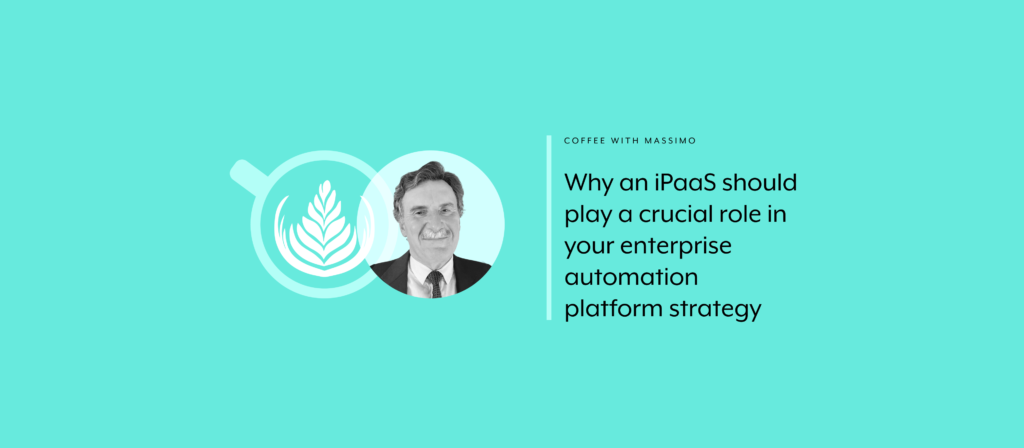There are many different types of automation and integration platforms in the market, but most organizations don’t need to adopt the full set of available tools and technologies when building their enterprise automation platform (EAP).
In many cases, an organization, especially a midsize one, can primarily rely on an integration platform as a service (iPaaS) to provide most, if not all, of their EAP functionality. But even large and global organizations view iPaaS technology as increasingly pivotal to their business.
There are various reasons why this is the case.
For one, an iPaaS can support a wide range of integration use cases. This includes application integration, data integration, B2B integration, process integration, API integration, and event brokering (given its versatility, I occasionally refer to an iPaaS as the “the enterprise automation swiss army knife”).

Additionally, since it’s delivered in the cloud, it’s well suited to connect cloud-based applications to each other, or with on-prem systems, mobile apps, or even IoT devices. And finally, an iPaaS can offer a low-code/no-code UX for developing integration processes, thereby allowing employees outside of the enterprise automation team—like application developers, SaaS administrators, and even business users—to leverage it when addressing local needs and requirements.
Its ease of use and rich set of functionality, coupled with the convenience of cloud delivery, make iPaaS the ideal enterprise automation platform for midsize organizations. In the case of large organizations, it can fill numerous functional gaps from their established portfolio of traditional platforms (such as ESBs, ETL tools and BPM platforms) and occasionally support non-professional enterprise automation “builders”.
With all this in mind, it’s perhaps little surprise that the market for iPaaS is set to increase notably over the next five years. Some analysts forecast a compound annual growth rate of roughly 30% through 2026.
Even with its current success and rosy future, I believe that the market for iPaaS is set to evolve in the years ahead. I’ll share my thoughts on where it’s going as well as what you can do to select the iPaaS solution that’s best for your business.

Want to learn more?
These insights were presented during one of our “Coffee with Massimo” monthly webinars. You can watch the session’s full recording to catch everything Massimo shared.
Where iPaaS is headed
Given its growing adoption across functional units within organizations, which promotes collaboration between business and IT, I believe that iPaaS’ workgroup collaboration-based capabilities will improve further. In this way, iPaaS will be increasingly adopted by “fusion teams”, where IT and business people work together to deliver solutions.
In addition, I expect iPaaS offerings to expand their functional footprint incrementally by adding capabilities that support new use cases, such as application composition, workflow automation, digital integration hub, and event brokering. And, as more organizations look to adopt a democratized enterprise automation operating model, I expect iPaaS providers to invest significantly more on improving the governance and operations capabilities of their platforms.
In other words, iPaaS will increasingly absorb the functionality that’s currently provided by discrete, adjacent tools and provide “out-of-the-box” capabilities to cover most, if not all, of the features described in the enterprise automation platform diagram above.
What to consider when evaluating an iPaaS
An iPaaS is, clearly, worth investing in based on the value it presents today and the promises it offers going forward. The question of which solution you should choose, however, isn’t always straightforward.
Here are a few considerations that can help guide you along your selection process:
- Tactical vs strategic adoption: Do you plan to use the iPaaS to provide tactical support for a specific issue (such as integrating application A with application B)? Or do you intend to use it strategically for a variety of use cases across different teams?
- Alignment with your enterprise automation vision: Based on the plan your team sets forward, how successful are specific solutions at meeting your requirements? For instance, if you’re looking to leverage an iPaaS for B2B integration, application integration, and data integration, which of the iPaaS vendors you’re evaluating supports all 3 use cases? Moreover, which vendors provide optimal support for the operating model you want to enable?
- The endpoints you want to connect: Which cloud applications, on-prem systems, mobile app, event stream, APIs, ecosystem, or IoT devices do you want to connect? You can easily remove an iPaaS solution from your list if it doesn’t offer connectivity to any desired endpoint(s).
- Skills for using the platform: If you’re looking to move from the centralized or federated operating models towards the democratized approach, you’ll need to make sure that the platform provides a low-code/no-code UX and powerful governance tools, among other capabilities that support non-technical users.
- Support for emerging requirements: Are you expecting to take on application composition? Or implementing a digital integration hub? Or adopting the democratized enterprise automation operating model? However your emerging requirements look, your iPaaS solution should meet them effectively.
Now it’s your turn: Take some time to review each of the considerations above with your team. Once you’ve arrived at an answer for each area, you’re ready to explore the iPaaS market and pinpoint the solution that can deliver the biggest return to your business.
